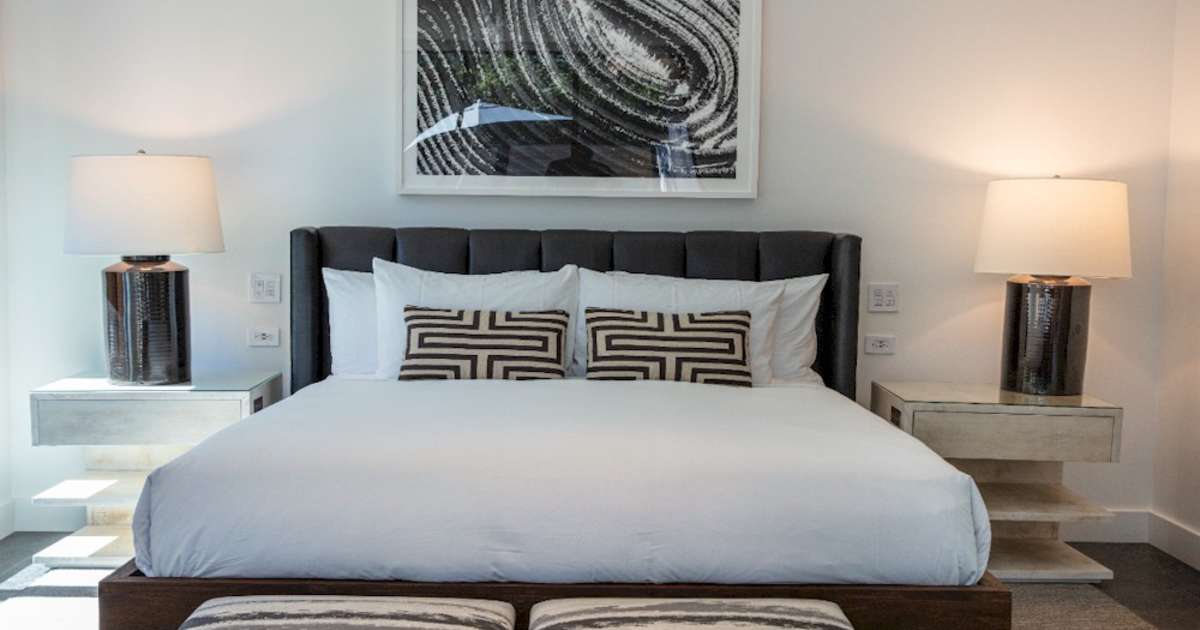
The wellness travel sector is experiencing unprecedented growth, with the Global Wellness Summit predicting spending on wellness tourism to reach $9 trillion by 2028. This surge reflects an evolving consumer focus on health, relaxation, and holistic well-being, as travelers increasingly seek experiences that allow them to recharge mentally, physically, and emotionally.
Hotels, in turn, have responded by integrating wellness-focused amenities—such as state-of-the-art fitness centers, spa services, nutritious dining options, and mindfulness experiences—into their offerings. But while these amenities are crucial, one important factor is often overlooked: air quality.
Beyond offering basic amenities like air conditioning and standard HVAC systems, the future of wellness travel includes fresh, purified air as an essential part of the guest experience. As guests increasingly look for restorative and health-conscious stays, the quality of the air they breathe is emerging as a defining element of the guest experience. Clean air doesn’t just support physical comfort; it plays an integral role in helping guests feel mentally rejuvenated and physically restored. Hotels that integrate optimal air quality into their offerings are ahead of the curve in meeting the demands of today’s wellness-conscious travelers.
The Hidden Impact of Air Quality on Guest Experience
Why is air quality so important? Air quality is something most of us take for granted. However, when we enter a space filled with stuffy, stale air, the negative impact is immediately apparent. Guests staying in hotels are no different. Poor indoor air quality can have a profound effect on how they feel. Common complaints related to poor air quality in hotels include headaches, fatigue, difficulty sleeping, and general discomfort, all of which can undermine the overall guest experience. These negative effects are often exacerbated when guests have allergies or respiratory conditions like asthma. Poor air circulation, airborne pollutants, allergens, and contaminants in the air can disrupt the body’s natural rhythms and hinder guests from getting the restful sleep they need to fully recharge.
On the flip side, clean and well-ventilated air can make a significant difference in a guest’s overall wellness and experience. It can reduce stress, improve sleep quality, boost energy levels, and create a sense of comfort and relaxation. Air quality is fundamental in facilitating the body’s transition into a restful state, preparing the environment for a good night’s sleep. Without the disruption of poor air quality, guests are more likely to wake up feeling refreshed and ready to take on the day, making it a crucial element in the guest experience that hoteliers can’t afford to ignore.
Improved air quality also enhances mental clarity, which is especially beneficial for business travelers or those seeking to rejuvenate their minds as much as their bodies. A calm, clean-air environment promotes a sense of well-being and mental peace that allows guests to truly disconnect from the stresses of everyday life. In a world that is increasingly mindful of the impact of environmental factors on overall health, ensuring optimal air quality should be seen as an essential step in providing a complete wellness experience.
Beyond Comfort: Air Quality as a Competitive Differentiator
As travelers’ expectations evolve, so must the amenities that hotels offer. Wellness rooms, which include features such as purified air, hypoallergenic bedding, and allergen-free environments, are on the rise. These specialized rooms are designed for guests who prioritize their health, whether due to sensitivities to allergens, concerns about pollution, or simply the desire to enjoy an environment that actively contributes to their wellness.
Many hotels have taken wellness a step further by dedicating entire floors specifically for wellness travelers. These floors are designed to offer a healthier, more rejuvenating environment and are often located near spas and fitness centers. Beyond air quality, wellness floors also incorporate features such as circadian lighting, which mimics natural light patterns to support guests’ sleep-wake cycles, and in-room fitness equipment, offering guests the ability to maintain their workout routines without leaving the comfort of their rooms.
Additionally, some wellness floors offer enhanced soundproofing to ensure a quiet, restful atmosphere, while providing amenities like essential oil diffusers or wellness minibars stocked with healthy snacks and hydrating beverages. Guests may also enjoy access to guided meditation apps, white noise machines, or even digital detox programs designed to reduce stress and encourage mindfulness during their stay. By prioritizing air quality and holistic wellness offerings, hotels can differentiate themselves in a competitive market, providing guests with an environment that meets their expectations and enhances their overall well-being.

 Highlighting air quality in hotel branding, from guest testimonials to wellness certifications, helps properties stand out in the growing wellness travel market. — Photo by Pure Wellness
Highlighting air quality in hotel branding, from guest testimonials to wellness certifications, helps properties stand out in the growing wellness travel market. — Photo by Pure Wellness
Revenue Potential: The Business Case for Air Purification
Wellness travelers spend significantly more than traditional leisure travelers, with studies showing they are willing to pay up to 56% more for accommodations that prioritize their well-being. Hotels that cater to this segment report increased revenue per available room (RevPAR), longer stays, and stronger guest retention.
By integrating air purification as a core component of the guest experience, hotels can create new upsell opportunities. For instance, premium wellness room packages featuring advanced air filtration systems, hypoallergenic amenities, and enhanced environmental controls can appeal to guests with respiratory sensitivities or those simply seeking a higher-quality stay. These offerings provide a compelling way to increase perceived value while driving additional revenue.
Beyond direct guest spending, hotels can unlock additional revenue streams through strategic partnerships. Collaborations with fitness and wellness companies, and health-focused product lines offer co-marketing opportunities, exclusive product placement, and potential revenue-sharing models. Hotels can also create tailored wellness retreats, corporate wellness programs, or co-branded experiences that attract niche audiences and position their property as a leader in health-conscious hospitality.
For properties with tighter budgets, even small-scale air quality enhancements can yield significant returns. Simple yet impactful changes—such as installing high-quality air filters, refreshing outdated rooms with cleaner air systems, or offering hypoallergenic room upgrades—can improve guest satisfaction and keep hotels competitive without requiring a full-scale renovation. By strategically leveraging air purification as both an amenity and a revenue driver, hotels can enhance the guest experience while achieving long-term financial success.
Marketing the Invisible Amenity: How Hotels Can Highlight Air Quality
While the benefits of enhanced air quality are significant, they can often be invisible to guests unless hotels actively promote them. Unlike other more tangible amenities, air quality is something that only becomes noticeable when it’s lacking. When guests understand the importance of clean air and the role it plays in overall health, they are more likely to choose a hotel that goes the extra mile to provide it. Therefore, hoteliers need to focus on how they market air quality to prospective guests.
Transparency is key. Hotels should actively showcase their commitment to air quality in their marketing materials—be it on their website, in-room brochures, or through social media channels. Featuring air quality metrics, such as the types of air filtration systems used, the results of air quality tests, and specific certifications related to wellness standards, can give potential guests a clear picture of the property’s commitment to their health and comfort.
Guest testimonials also play a significant role in building trust. When previous guests speak to the improvements in air quality they’ve experienced, particularly regarding how it helped with sleep quality or general comfort, it helps future guests feel more confident in their choice of accommodation. Furthermore, wellness certifications and adherence to sustainability practices can further elevate a hotel’s brand positioning. These practices will resonate with environmentally conscious travelers who prioritize both their health and the planet.
The Future of Hospitality Wellness
Air quality isn’t just an amenity—it’s a necessity for modern travelers. As wellness tourism continues to evolve, hotels that prioritize air quality will become leaders in guest satisfaction and profitability. In the competitive landscape of wellness travel, air quality will no longer be considered an optional luxury but a fundamental aspect of any health-conscious hotel experience.
Hotels that invest in enhancing air quality will create healthier, more comfortable spaces for their guests but will also set themselves apart as wellness destinations. By embracing cutting-edge air filtration systems, hypo-allergenic options, and clean-air practices, hotels will provide the sanctuary guests crave. As travelers continue to prioritize well-being, air purification will become an expected standard—an invisible amenity that drives the future of hospitality.
By addressing both the physical comfort and mental rejuvenation needs of guests through better air quality, hoteliers can ensure that their properties stand out, build lasting loyalty, and capitalize on the rapidly growing wellness tourism market.
*Reprinted from the Hotel Business Review with permission from www.HotelExecutive.com.


